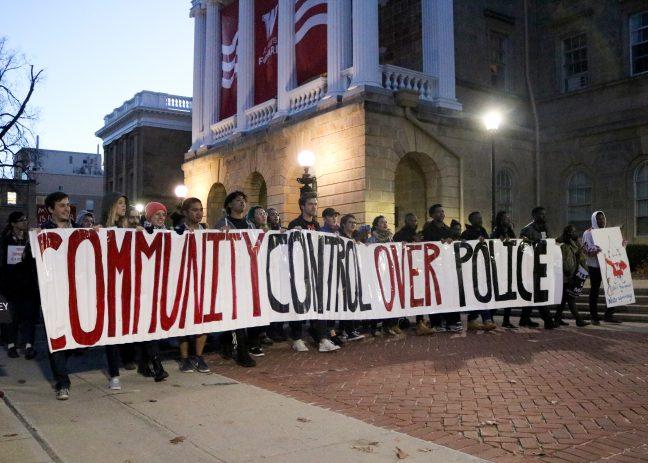In Oct. 2017, the Board of Regents approved a policy which outlined the types of demonstrations that are appropriate on campus and at University of Wisconsin affiliated events. Nearly a year later, the UW Police Department and the UW Division of Student Affairs published “Protest Guidelines,” a 15-page document meant to clearly describe what the protest policy looks like in action.
In short, the university is trying to make sure no one’s right to expression is infringed upon. But in doing so, does that not infringe upon the free speech of others?
The right to protest is, in essence, the ability to gather and show support for a cause or opposition for an action or ideology being spread. This First Amendment right is disregarded when the university dictates how groups can protest.
“While the First Amendment protects the right to express one’s views, it also allows the university to place reasonable time, place, and manner restrictions on that expression,” the university protest guidelines state.
The guidelines also categorize common actions as disruptive. For instance, a protester cannot block the vision of others in any manner, such as with a sign or a person’s body. But signage is central to most protests, and at a crowded demonstration, how can one regulate where each person stands? Overcrowding should not be seen as disruptive. The broad nature of these guidelines has the potential to call just about any peaceful protest disruptive.
These guidelines have the potential to shut down successful peaceful protests. Take the 2014 “Die-in” protest in College Library. Hundreds of students lay down on all three floors of College Library to “raise awareness about the glaring racial issues present on the UW-Madison campus” and beyond, according to event organizers.
At the time, UWPD Lt. Aaron Chaplain said the event went off without a hitch. Yet, according to today’s protest guidelines, this successful protest would have been called “disruptive” because students intentionally blocked walking paths or disturbed students studying for exams.
Although it is too early to see how this will play out in the future of activism on campus, this doesn’t stop many groups from being highly wary of how the university and UWPD take action in ending demonstrations and administering punishment for demonstrations leaders and organizers.
Despite the regents’ particularly broad guidelines, this policy does not have to be seen as a death sentence for student activism on campus. If the student body and faculty stay vigilant, continue to be active in demonstrations and have clear communication with the university, there can be successful protests. Stay politically active, discuss plans to demonstrate with the university and document any and all attempts UW takes to inhibit freedom of speech. Hold UW accountable to the equitable distribution of the policy guidelines, always ask questions and hold each person accountable for safe demonstrations. Freedom of speech, restricted or not, cannot be taken for granted.
Emiliana Almanza Lopez (almanzalopez@wisc.edu) is a junior majoring in sociology and environmental science.


